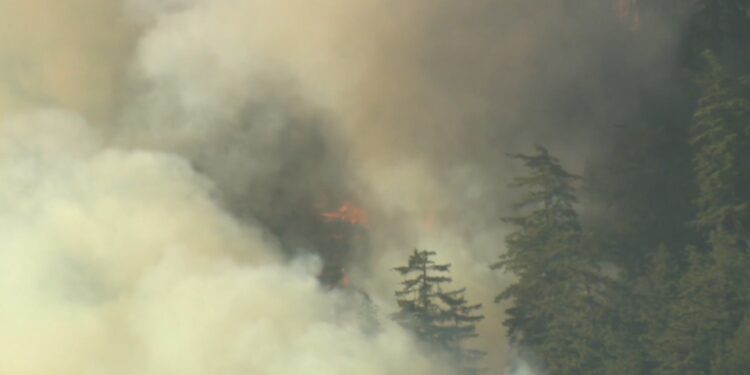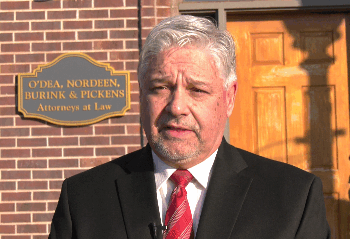LANSING, Mich. (WZMQ) – As wildfire smoke continues to drift into Michigan from Canada, experts say the increasing frequency and intensity of wildfires across North America are tied to a combination of climate change and decades of forest management practices.
“Fires are a natural part of many forest ecosystems,” said Chad Papa, the Director of the Forest Carbon and Climate Program Department of Forestry at Michigan State University. “But what we’re seeing now is a major departure from historic fire regimes, with hotter, more catastrophic fires and slower forest recovery.”
In the western U.S., a history of fire suppression and reduced timber harvesting has led to denser forests that are more prone to combustion. Laws enacted in the 20th century often restricted controlled burns, which experts said have contributed to overgrown conditions that increase wildfire risk.
Meanwhile, in Canada, vast stretches of boreal forest are experiencing severe tree mortality due to drought, invasive pests, and warming temperatures. Boreal forests tend to be at a higher risk of more intense fires because of the excess carbon in the soil and the types of trees. These dead and drying trees provide fuel for large-scale fires that burn intensely and spread quickly.
“The structure and chemical makeup of boreal conifers make them more susceptible to canopy fires,” the expert said. “Combined with climate pressures, it’s creating a high-risk situation.”
The effects of these fires extend far beyond the burn zones. This summer, air quality in Michigan declined sharply on several days due to smoke from fires burning hundreds of miles away. Researchers say this highlights the interconnectedness of forest ecosystems and the global atmospheric patterns that can carry environmental consequences across borders.
In addition to air quality, wildfires also threaten forest regeneration, water availability, and economic stability in natural resource-dependent communities. Experts warn that many burned areas are failing to regrow due to the severity of recent fires, a trend that could reshape entire landscapes if left unchecked.
While the causes are complex, researchers say future solutions may depend on more proactive land management, such as reintroducing prescribed burns and sustainably harvesting fire-prone timber. However, working across federal, state, and private land boundaries remains a major logistical hurdle.
“Fire doesn’t care who owns the land,” one expert said. “Managing it effectively takes coordination across all levels.”


















